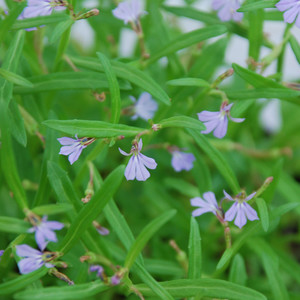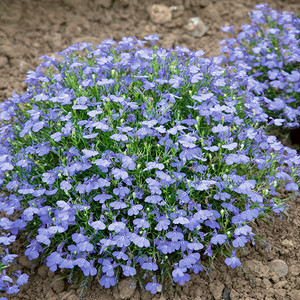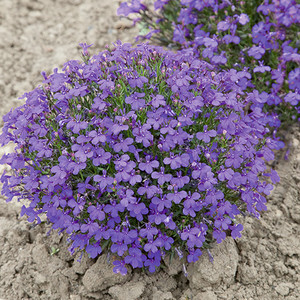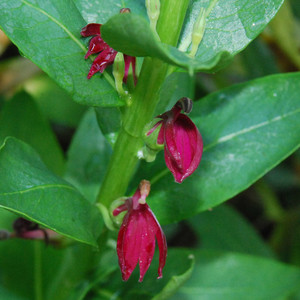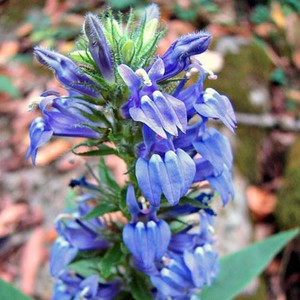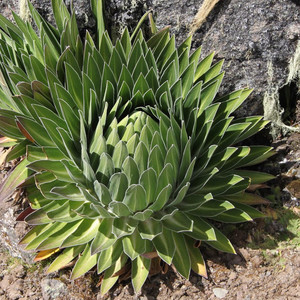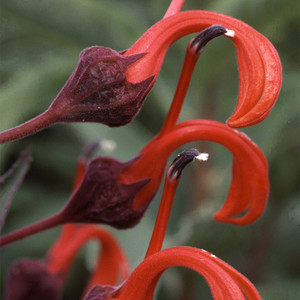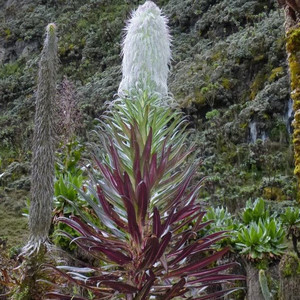-
Nothing here. Please add something or load your cart
-
LOBELIA ANCEPS
If you are searching for an easy, perennial and attractive groundcover plant for a wet or boggy area, this plant is the perfect plant for you! A herbaceous perennial groundcoverer, it has prostrate branches that root at the nodes and sprays of flowers that may be white or varying shades of blue or mauve, and although hard winters can cut it back severely, it invariably re-sprouts each spring. A relatively widespread species, it lives in southern Africa, New Zealand and Australia and has become naturalized in Brazil. It was originally collected by Joseph Banks in New Zealand. ... Learn More$3.47
-
LOBELIA ERINUS 'CAMBRIDGE BLUE'
A compact variety renowned for its excellent garden performance with clear sky-blue flowers set above narrow, airy foliage on compact plants. It makes a sparkling addition to beds, containers, and and window-boxes, and looks well placed in the rockery or at the edges of pathways. It is one of the most easily-grown annuals and is deservedly popular for its versatility and long flowering period. ... Learn More$2.65
-
LOBELIA ERINUS 'CRYSTAL PALACE'
Probably the most popular of all bedding lobelias, with dainty, deep blue flowers smothering neat globes of foliage that form very dwarf, compact plants. It makes a sparkling addition to beds, containers, and window-boxes, and even looks well placed in the rockery. A really easy-to-grow annual that is deservedly popular for its versatility and long flowering period. ... Learn More$2.65
-
LOBELIA POLYPHYLLA
A new and rare Chilean introduction growing many stems which carry delightful and utmostly showy, burgundy-red, wine-coloured flowers in late spring. This semi-woody perennial has upright, branching stems ending in a raceme with intriguing, curved-funnel-shaped flowers above thick, waxy, narrow leaves. It will do well in any rich, very well drained, rocky soil in a sunny spot. ... Learn More$4.35
-
LOBELIA SIPHILITICA 'BLUE CARDINAL'
Spires of clear blue, snapdragon-like flowers open in succession on strong stems bearing thick, crinkly leaves. These lovely flowers will grow equally well in dry or wet conditions and are very hardy and soundly perennial. it is a most desirable plant for woodland gardens especially since it blooms bright blue in late summer. The unfortunate species name, siphilitica, is based on the fact that it was a supposed cure for syphilis. ... Learn More$3.94
-
LOBELIA TELEKII 'MT ELGON'
Another giant rosette plant which is stunningly similar to the puyas of the high Andes, and also to the giant echiums that evolved separately, on the Canary Islands, demonstrating convergent/parallel evolution. It forms a large rosette of narrow, hairy leaves that eventually produces a giant inflorescence of creamy white flowers, up to 3 m tall, protected by masses of long, silvery hairy bracts and pollinated by birds. Lobelia telekii is native to the high mountains of tropical eastern Africa and inhabits dry, rocky slopes between an astonishing 3500 and 5000 m elevation on Mount Elgon, the Ab ... Learn More$5.10
(10+ seeds)
-
LOBELIA TUPA
An incredible giant, hardy Lobelia from Chile. From a large rosette of thick leathery felted leaves arise thick stems carrying tropical orchid-like deepest carmine flowers. A valuable late season display from July until the autumn frosts. ... Learn More$4.42
(300 seeds)
-
LOBELIA WOLLASTONII
Rare and unique, this palm-like giant Lobelia forms a large rosette of purplish-green, large, narrow, hairy leaves, and a tall sizeable woody trunk. Eventually a giant flower spike arises protected by masses of long, silvery hairy bracts, and finally countless deep blue flowers open. Similar in stature to a giant Echium, it can grow up to 6 metres in total. Rare even in the wild, where it is pollinated by birds, it lives in the high-elevation bogs of the alpine zone, between 3700 and 4300 m (12100 and 14100 ft) and is native to the high Rwenzori Mountains of tropical Eastern Africa from Ugand ... Learn More$6.19

